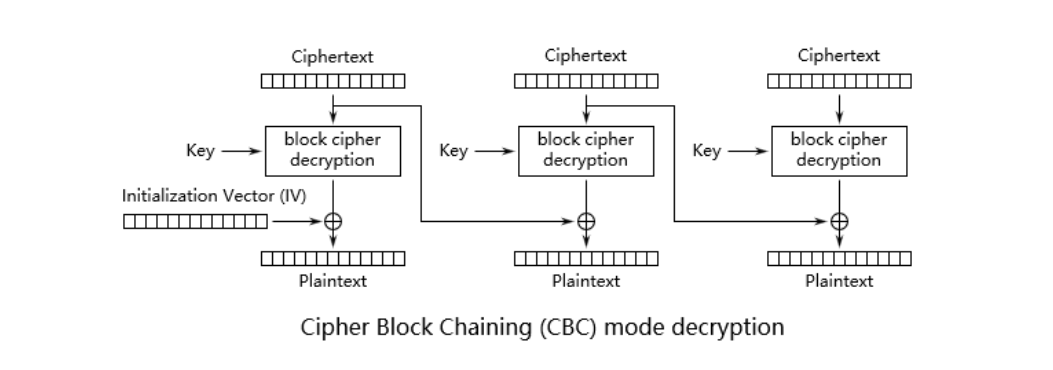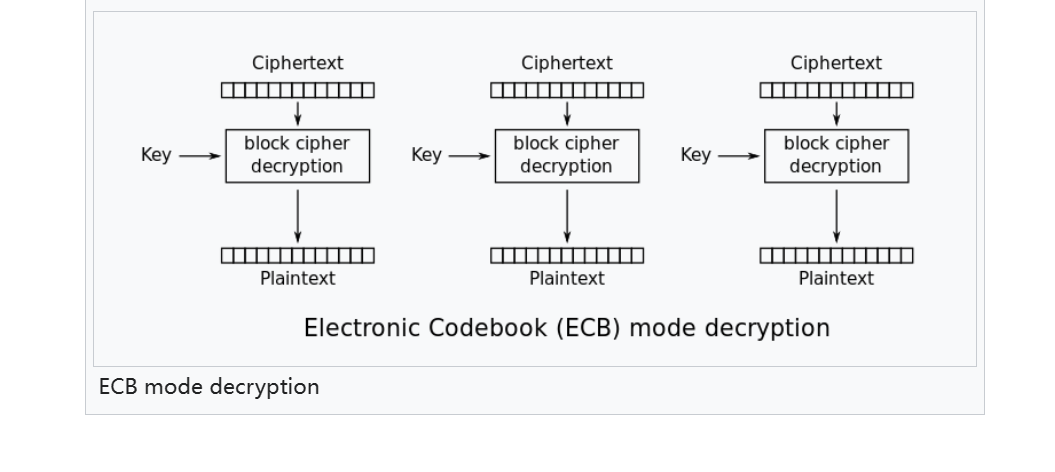又是一道CBC
[安洵杯 2020]easyaes
附件
1
2
3
4
5
6
7
8
9
10
11
12
13
14
15
16
17
18
19
20
21
22
23
24
25
26
27
|
from Crypto.Cipher import AES
import binascii
from Crypto.Util.number import bytes_to_long
from flag import flag
from key import key
iv = flag.strip(b'd0g3{').strip(b'}')
LENGTH = len(key)
assert LENGTH == 16
hint = os.urandom(4) * 8
print(bytes_to_long(hint)^bytes_to_long(key))
msg = b'Welcome to this competition, I hope you can have fun today!!!!!!'
def encrypto(message):
aes = AES.new(key,AES.MODE_CBC,iv)
return aes.encrypt(message)
print(binascii.hexlify(encrypto(msg))[-32:])
'''
56631233292325412205528754798133970783633216936302049893130220461139160682777
b'3c976c92aff4095a23e885b195077b66'
'''
|
还是CBC的题,上面学习了一下填充预言攻击,是已知 IV和 所有密文的一道交互题,这次是一道已知 key和最后一组密文、所有明文的题(key可求,不就是已知的嘛)
据观察,hint 为4字节重复八次而成的一个32字节,而key只有16字节,前后异或求出key
我们再回看一下cbc的解密过程
![9072994e5bdc89671da4926c1d63d0c]()
再对比一下 ECB模式的解密过程
![image-20240305200019861]()
前面的步骤是不是惊人的一样,cbc模式就只多了异或 IV
这意味着我们可以通过ECB模式来解CBC模式的前一步骤再和IV异或即可
$定义解密函数dec(enc,key)$
$enc3 = dec(enc4,key)\oplus msg[3]$
$enc2 = dec(enc3,key)\oplus msg[2]$
$enc1 = dec(enc2,key)\oplus msg[1]$
$IV = dec(enc1,key)\oplus msg[0]$
得解
exp:
1
2
3
4
5
6
7
8
9
10
11
12
13
14
15
16
17
18
19
20
21
22
23
24
25
26
| from Crypto.Util.number import *
from Crypto.Cipher import AES
from Crypto.Util.strxor import strxor
xor = 56631233292325412205528754798133970783633216936302049893130220461139160682777
xor = long_to_bytes(xor)
key = long_to_bytes(bytes_to_long(xor[:16]) ^ bytes_to_long(xor[16:]))
msg = b'Welcome to this competition, I hope you can have fun today!!!!!!'
msgs = [msg[i:i+16] for i in range(0,len(msg),16)]
print(msgs)
enc4 = '3c976c92aff4095a23e885b195077b66'
IV = bytes.fromhex(enc4)
def dec(m,key,enc):
aes = AES.new(key,AES.MODE_ECB)
enc = strxor(aes.decrypt(enc),m)
return enc
for m in msgs[::-1]:
IV = dec(m,key,IV)
print(b'd0g3{' + IV+ b'}')
|

